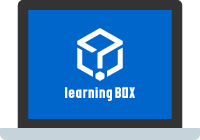Key to Success in Online Corporate Training

Many companies are implementing telework as a way of working in the new normal era. Not only has the way of working changed from the traditional way of coming to the office, but the format of training has also changed dramatically. In addition to teleworking, online training is becoming increasingly popular.
What are the characteristics of such online training during telework that make it different from group training?
This article will discuss common challenges in online training and how to deal with them, as well as key points to improve the operational effectiveness of training.
What is online training for teleworkers?

While teleworking allows employees to work without being restricted by time and location, it becomes difficult to gather employees at the same venue as for traditional training. In such cases, online training will make it easier to conduct training in a telework environment.
What is online training?This refers to training courses that are taken via web conferencing systems, etc.Learners learn by using devices such as computers, smartphones, and tablets. Such online training is also called "e-learning training.
When conducting online training, it is important to understand the differences from traditional group training conducted in person and to cover the disadvantages unique to telework.
Back to ContentsTypes of online training available for teleworkers

There are two main types of online training that can accommodate telework: "live delivery" and "on-demand delivery. The features of each training method are explained here.
Live-streamed training
Live training is characterized by real-time delivery of lectures via a web conferencing system or other means, with each learner participating online. Because it is held in real time, it has a realistic feel similar to a group training session.
The instructor and learners can interact with each other, allowing for a question-and-answer session if there is anything that is not understood on the spot. The instructor can also instruct the learner and have the learner speak, similar to a face-to-face lecture. Compared to the on-demand delivery type, it is easier for the instructor and learners to communicate with each other.
The advantage of live-streamed training is that it is easy to follow up on the spot on areas that learners do not understand. However, problems with the communication environment can disrupt the video and audio, which can hinder the learning experience. Also, since all learners must participate at the same time, it is not suitable for self-paced learning.
On-demand delivered training
On-demand delivery training is characterized by the use of pre-prepared content. Learners learn using training content shared online. A variety of learning styles are possible, such as watching videos of recorded lectures or viewing distributed training materials.
On-demand training allows learners to receive training at their own pace. In addition, since the training content can be prepared in advance, the burden of preparation on the management side can be reduced compared to live delivery, which is held in real time. There is also no need to worry about major impact due to problems with the communication environment.
The advantage is that it is possible to provide training of consistent quality while reducing the burden on operations. However, the drawback is that it is difficult to grasp learners' reactions during the training if the training is designed without assuming learner output.
Feedback should be provided after the course to enhance the effectiveness of the training, for example.
Common challenges and solutions for online training during telework

Online training may face different challenges than traditional group training. If you are holding the training during telework, be sure to understand the common challenges and keep a handle on how to resolve them.
Difficult to create learner initiative
Compared to traditional group training, online training tends to be more difficult to communicate non-verbally, such as facial expressions and gestures. This raises the hurdle for learners to ask questions and express opinions more than in traditional training, and it is not uncommon for learners to feel anxious and become passive.
To prepare for these challenges, it is necessary to keep the number of participants in training programs during telework to some extent. It is also advisable to incorporate small group work into the training program to encourage learners' independent participation.
Prone to unexpected problems
During online training, problems with the Internet environment may occur. Some troubles may be difficult to promptly identify the cause and may not be resolved. The following are examples of common problems.
- Noise in the audio
- Difficult to see screen-shared materials
- The line goes dead in the middle.
It is important to have a system in place to deal with unexpected problems as soon as possible. Specifically, separate the roles of facilitators and assistants, and prepare a manual on how to deal with problems.
Difficult for learners to maintain focus
During telework training, it tends to be difficult for learners to have the right amount of tension to keep them focused. This is because learners are not in direct line of sight of the instructor. Another reason is that actions such as question-and-answer sessions and group work are limited compared to face-to-face training.
To create the right amount of tension in training, it is a good idea to establish rules and mechanisms to increase the need to focus on the training. For example, a check test can be administered to review the training content and assess the learner's level of understanding.
Back to ContentsKey Points to Increase the Effectiveness of Online Training During Telework

Companies offering online training should consider the following initiatives to ensure effective implementation. Finally, the following are some key points to enhance the effectiveness of the training program.
Establish an Internet communication environment
A stable communication environment is essential for smooth telework training. However, it can be difficult to maintain a perfect environment in which all participants are completely trouble-free. Therefore, it is ideal if companies can make thorough preparations to minimize problems.
For example, measures include creating a checklist of environmental settings for computers and web conferencing systems that are likely to cause problems in online training, and having participants check these settings. It is also important to build and select a management system that is error-resistant.
Keep in mind that communication is not a one-way street.
In online training, it is important to incorporate two-way communication to encourage interaction between instructors and learners and to maintain a moderate level of tension. Learners are basically allowed to attend with video and interact with each other face to face. By seeing each other's faces, it will be easier for communication to be as natural as face-to-face communication.
It is also effective to prompt learners to take some action in response to the instructor's questions. In this case, the chat and reaction functions of the web conferencing system can be used to check each learner's response. I understand now! I see. and other simple comments, it is easy to sense the excitement of the meeting.
Implement a learning management system suitable for online training
Consider implementing a learning management system suitable for online training. A dedicated management system will facilitate the work of HR personnel, from the creation of training content to the management of learner performance.
The learning management system includes functions to distribute training materials and to check the progress of each learner. Using the functions to conduct check tests will be helpful in enhancing learning management. It is easy to create an environment in which learners can easily maintain their motivation.
Back to ContentsConduct effective online training while teleworking!
In this issue, we have reported on the features of online training that can accommodate telework, common issues and how to deal with them, and even points to enhance the effectiveness of training.
A major challenge with online training is that it is difficult for learners to take initiative and feel a sense of urgency. When conducting training, consciously incorporating interactive communication and thorough learning management will help maintain motivation.
If you are looking for a learning management system for online training, you can use the "learningBOX LearningBOX is a learning management system that provides all the functions necessary to conduct online training, including the creation and distribution of teaching materials, grading, and learning history management.
learningBOX ON
and
You can sign up from Free Plan to try learningBOX Free Plan. Up to 10 accounts are available without expiry date.
▼You may also like:
Back to Contents


-
Discover rich featuresService Guide
-
Feel free to contact usGet in Touch
-
Try our Free PlanTry Free Plan











